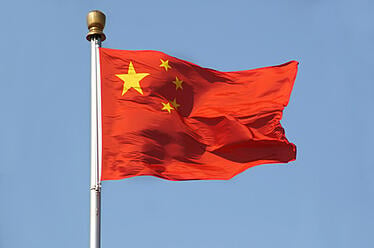The International Trade Blog International Sales & Marketing
China's Consumer Market: Opportunities and Challenges
On: June 10, 2007 | By:  Prema Nakra |
9 min. read
Prema Nakra |
9 min. read
 Everyone is talking about the People’s Republic of China (PRC or China), and not just because the country is hosting the next Olympic Games. Today China stands tall as a one of the fastest growing economies in the world.
Everyone is talking about the People’s Republic of China (PRC or China), and not just because the country is hosting the next Olympic Games. Today China stands tall as a one of the fastest growing economies in the world.
In the last three decades, as per the latest figures, China’s economy grew by 10.6%. The Chinese economy has gone from being a lumbering agrarian economy 25 years ago to a rapidly developing economy today.
China-based factories make 70% of the world toys, 60% of world’s bicycles, 50% of world’s shoes, and 33% of world’s luggage.
An Introduction to the Chinese Marketplace
At the present time China’s economic growth is in the golden era with high growth and low inflation. China is now the third largest trading nation and one of the fastest growing markets for U.S. goods and services. China’s economic miracle can be attributed to soaring exports and huge investments in buildings and the requisite infrastructure.
Foreign investment is flowing in; trade is rising, as are the real estate and stock prices. China has received the highest Foreign Direct Investment (FDI) in the world. FDI in China was $63 billion in 2006.
Between 1985 and 2003, China has consistently been the world’s fastest growing economy with an average growth rate of nine percent. Since its entry into the World Trade Organization in 2001, China has been seen in a new light, not just the world's center of low cost manufacturing, but also as a legitimate consumer market open for global business. Currently, about 80% of the world’s top 500 companies have invested in China.
China’s Vast Consumer Market
The Chinese consumer market is growing by leaps and bounds as is evidenced by the sales record of many consumer durable products. According to The Economist magazine, car sales in China have risen by 30% over the last year. Sales of mobile phones and household electronics are up by 20% to 40%. Retail sales grew by 12.3% in real terms in 2006.
Already there are an estimated 300,000 Chinese with a net worth of $1 million USD or more, but it is not just millionaires who are on a buying spree. The China Branding Strategy Association claims that some 175 million Chinese can afford to buy luxury products.
In a recent survey by the China Market Research Group (CMR), 60% of respondents claimed to have purchased luxury goods. A large majority of these (89%) luxury goods buyers were between the ages of 20 and 30 with assets less than $25,000 USD. Most foreign consumer companies decided to position their products at the top of China’s market pyramid.
Multinationals That Succeeded
With their vast capital, technology and product lines, early entrants into China were the well recognized brand name owners such as Coke, Pepsi and P&G. These global giants practically scooped up the market with the power of their marketing offenses and the acquisition of existing local leading brands. Gaining a dominant market share was relatively easy for these early adopters.
Examples of successful marketers in China are illustrated here:
Johnson and Johnson is now a very enviable household name in China and Volkswagen produces cars for 80% of Shanghai taxis. Nokia, Erickson, Honda, Buick, Sony, Glaxo, Phillips and Pierre Cardin have all been engrained in minds of Chinese consumers as brands of choice.
Three years after its entrance in the Chinese market, Bentley has sold 133 cars (19 of which carried price tags over $1 million USD). In 2004 the total number of Bentleys sold in China was 56, with total revenues of $28 million USD, making China the third biggest Bentley market after America and Japan.
In 2005 BMW sold 23,595 vehicles in the Chinese mainland, up 52% from 2004. In the first six months of 2006, BMW had already sold 16,833 vehicles to mainland China, a 78.4% increased from the previous year.
China imported 20 million bottles of whiskey like Chivas Regal worth $87 million in 2005, an 86% increase over 2004.
Car sales in China have risen by 30% over last year. Sales of mobile phones and household electronics are up by 20% to 40%. Retail sales grew by 12.3% in real terms.
Multinationals That Retreated
Some Western business leaders are moving into China without any clear knowledge of the many pitfalls they will encounter: the weak rule of law, forceful government intervention, a scarcity of managerial talent, the likelihood of counterfeiting, a fast-paced business environment, and highly aggressive local competitors.
Here are a few examples:
Many global brewers entered China's market in the early 1990s trying to sell premium beer only to exit a few years later in the face of tough competition from countless low-cost Chinese brewers. The companies obviously rushed to market without a sufficient understanding of China’s market dynamics.
In the high-technology industry, Google has lost market share to the search engine Baidu. Baidu.com is an internet search engine start up that began operating a few years ago and has one of the most trafficked websites in the world. The look of its home page is similar to that of Google, which invested in Baidu several years ago, but then sold its small stake at huge gain last year after Baidu went public on the NASDAQ. According to iResearch, Baidu commanded 63%share of the market Google was second with 19% and Yahoo with 7.6%.
Yahoo recently transferred its operations to a Chinese company Alibaba.com, and eBay, even after buying one of its biggest competitors in China, continued to lose ground. In December 2006, eBay handed over its operations to Tom.com, which is based in Hong Kong, in a joint venture.
Marketing In China: Meeting the Challenges
Many businesses that could not make it in China failed to realize the challenges they might face as they rushed to woo 1.3 billion residents of China. One of the biggest discoveries these businesses made was that outside the major urban areas of Beijing, Shanghai and Guangzhou, it was a real challenge to do business here even when they had local partners.
Widely dispersed consumers with limited spending power; fragmented retail, distribution and media channels; and scarce local talent throughout the industry value chain created marketing barriers that were costly and time consuming to overcome.
Some of the challenges faced by international marketers in China are discussed below:
Cultural Challenge
China is one of the big emerging markets with strong leadership, hardworking and intelligent people and a habit of self reliance. China represents political, traditional and business cultures with their own unique characteristics and distinctiveness. Confucianism, the Dynasties, the Republic of China, Buddhism and Communism have all influenced the beliefs, behaviors, and practices of Chinese people and businesses.
Many different cultures and Chinese comfort zones (tastes, beliefs, values, attitudes and a second generation of the Chinese one-child policy) have produced a culture of high expectations. These consumers are not worrying about how to pay for a pack of cigarettes, a television set or a bicycle, as they did two decades ago.
Along with this new culture there exists an ancient culture representing a billion or more people who essentially buy food and clothing at or slightly above the subsistence level.
Marketing opportunities exist in both these cultures. Savvy marketers must find profitable niches in one or both these segments by understanding the cultural differences before pushing products or services in this land of 1.3 billion inhabitants.
Regulatory Challenges
Beijing has officially complied with its commitment to open up the domestic construction market as part of the agreement on China's accession to the World Trade Organization (WTO) in 2001. But it has placed formidable obstacles in the way of foreign companies trying to take advantage of this opportunity.
International marketers continue to have concerns about fair market access due to strict testing and standards requirements for some imported goods. A lack of transparency in the regulatory process makes it difficult for businesses to plan for changes in China’s market structure.
Intellectual Property Right (IPR) Challenge
China has long been the number one source of counterfeit goods marketed across the globe. The United States Trade Representative (USTR) 2006 report to congress states that the levels of piracy in China across all lines of copyright business range between 85% and 93%, indicating little or no improvement over 2005 despite repeated anti-piracy campaigns in China.
Since joining the WTO in 2001, China has strengthened its legal framework and amended its laws and regulations regarding IPR, but weak enforcement continues to impede the IPR system prevalent in China.
Segmentation Challenge
Global marketers are beginning to realize that China is not a single homogeneous mass market. A good starting point is to review six distinct markets in China and research and analyze the unique characteristics of each region to identify the markets that offer the best opportunities given your corporate mission, culture, competitive advantage and resource constraints.
The World Bank ranks the six regions from the most attractive to least attractive in the following order:
- Southeast (Jiangsu, Shanghai, Zhejiang, Fujian, and Guangdong);
- Bohai (Shandong, Beijing, Tianjin, and Hebei);
- Central (Anhui, Henan, Hubei, Hunan, and Jiangxi);
- Northeast (Heilongjiang, Jilin, Liaoning);
- Southwest (Yunnan, Guizhou, Guangxi, Sichuan, Chongqing, and Hainan),
- Northwest (Shanxi, Shaanxi, Neimenggu, Ningxia, Qinghai, Gansu, and Xinjiang).
Since market research is quite underdeveloped in China, marketers find it hard to find accurate facts, figures and consumer insights for any of these markets. Primary research is almost a prerequisite to understanding the market including the six regions identified above.
Product and Pricing Challenge
In China, the winning consumer product companies are literally forced to routinely and regularly improve both the products and marketing methods to remain viable. In other words, successful companies must undertake rapid product innovation and adaptation supported by extensive product testing and creative use of pilots.
Companies willing and able to participate in multiple categories are able to amortize their fixed costs across a broad range of products and are able to secure greater cooperation from distribution channels and generate profits within a reasonable time. Multinationals such as Nestle, President Foods, and DANONE are successful because they are able to do just that.
Moving beyond the premium or luxury brand even in everyday product categories is also a challenge.
When it comes to product positioning, taking the high ground and introducing cutting-edge products is effective in building the brand image. Consumers pay a premium for products they like to be seen using in public as is evidenced by the success of the Starbucks and Nike brands.
New approaches to China’s consumer markets include stretching premium brands vertically to reach the mass market, adjusting product formulations and packaging, and modifying manufacturing processes so that prices can be set at lower levels for price sensitive segments.
Branding Challenge
As the Chinese economy booms, a proliferation of products—both home-grown and international—use branding to gain and maintain mind and market share. If a brand in a product category is successful in China, it often opens flood gates of competition from local and global players.
Due to linguistic and cultural differences, global branding rarely works in China. Chinese consumers appreciate a brand name that is catchy, memorable and distinct and says something about the product. Chinese consumers expect more in terms of how the names are spelled, written and styled and also whether they are considered lucky.
Distribution and Logistics Challenge
Consumer product companies find it extremely expensive to get their products into the mass market in China. The country’s transportation and logistics sector is only just developing. Historically state owned producers tended to transport their own goods, and logistical services were practically non-existent. Many warehouses in the country are still poorly designed and equipped (e.g., for climate control, segregation, automation).
China Rail’s near monopoly on rail transport has discouraged development of a service orientation. Loading can be subject to approval of the consigner’s loading plan, one or more inspections of containers, and loading fees that represent 20% to 30% of actual transport fees. Access to service may depend upon relationships with local rail authorities.
Apart from a limited number of major department and grocery chains in major cities, there are tens of thousands of small stores and street outlets in the countryside, all of which have very cluttered shelves and antiquated operating practices.
Communications Challenge
Marketing communications that includes positioning, advertising, public relations, sales promotion, and personal sales management is equally challenging in this market. Chinese consumers are not easily persuaded by advertising, although advertising is absolutely essential to create brand awareness.
Brand values, on the other hand, are better established by word of mouth. Chinese shoppers peruse package information very thoroughly when making purchases. Packaging plays a strategic role in marketing communications here.
Final Words
To investors and marketers, China represents a low-cost base for export-oriented production as well as a vast market yet to be tapped. The market, however, is viciously competitive, and competition is not just from global corporations.
China is attempting to build "national champions" that can compete with foreign companies, not just in China, but in the global marketplace. To win in this market, the players must commit the best of their tangible and intangible resources to match their key global and newly emerging domestic rivals.
Entering the market with a clear understanding of China’s business and buyer culture and psyche, it’s regulatory and technological environment, marketing infrastructure, and other market barriers goes a long way in separating the winners from losers.
Finally, no business can expect to succeed in China through remote-controlled management from overseas headquarters or through ‘paratrooper’ managers from overseas. Setting foot on Chinese soil and developing the requisite relationships and contacts with government and non-government entities is an important first step in this challenging market environment.

About the Author: Prema Nakra
Prema Nakra, Ph.D. is an educator, economist and a marketing consultant. Dr. Nakra is a professor of marketingand International Business and MBA Program Director at the School of Management, Marist College. Her academic qualifications include a Ph.D. in economics, MA in economics, and MBA in marketing management.
Prior to joining Marist, Dr. Nakra worked for international organizations including the International Cooperative Alliance for South East Asia, Ellington Duval Inc, Worldwide Marketing Group, and the New School for Social Research. An active member of American Marketing Association, American Economic Association, and Balanced Scorecard Technology Council, she is frequently invited to presents papers and at international business conferences.


